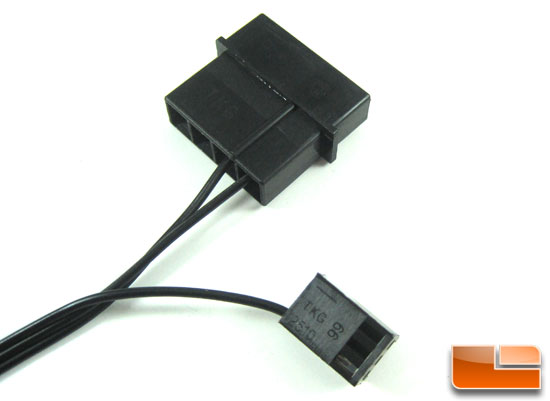Corsair Hydro Series H80 Liquid CPU Cooler Review
Looking closer at the H80

With the H80 unpacked we can start to get a good look at it. The Pump/Cold plate is connected to the radiator by the 12 long corrugated Low-permeability tubing. The pump has a single wire running from it for powering the pump and the fans.

The H80 is powered from a single 4 pin Molex connector. There is a fan header connection that will allow you to see RPM readings.

The pump housing has some flash to it compared to the H60. There is a button in the center of the top. This is the mode selector switch. Around the outside of the button is meter bar. The bar sections light up to show which of the three modes is being selected.

New to the H80 is the ability to power the fans off the pump housing. There are two fan headers on the top of the housing for powering the included fans; the controls in the pump housing then regulate the power to the fans for the selected speed profile.

On the side opposite the tubing connections is the port for connecting to the Corsair Link system.

The tubing connects to the pump with 90* swivel fittings. The Swivel fittings allow for flexibly for installing the cooler.

The H80 comes with a healthy amount of thermal paste pre-applied.

With the thermal paste removed we can get a good look at the base finish. The base is flat, and all the screw heads are sunk well below the surface.

The radiator is made from aluminum and supports dual 120mm fans. It is 120mm wide

152mm tall

and 38mm thick.

Now a not to noticeable change a first glance, but a big difference is that the H80 radiator has a fin count of 16~17 fins per inch. All of the previous Hydro Series coolers had a fin count of 21~22 fins per inch. The H80 radiator should be less restrictive. Typically, the lower the fin count, the lower the CFM fan you can run. The fans for the H80 are capable of pushing 92CFM on high, but on low they are pushing 46CFM. It will be interesting to see how the Balanced setting or medium speed will perform at the high overclocks.

The tubing connects to the radiator with straight fittings.

Comments are closed.